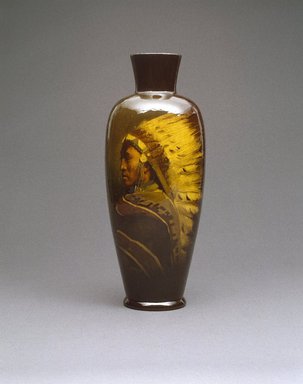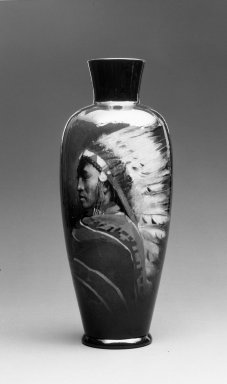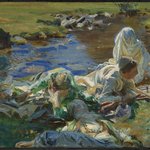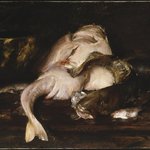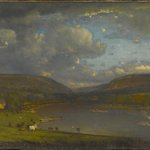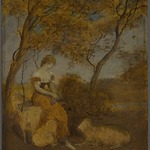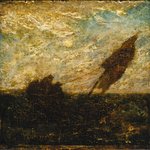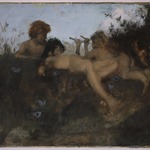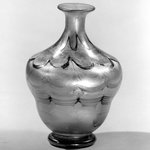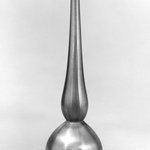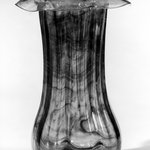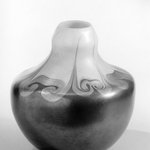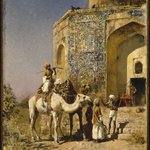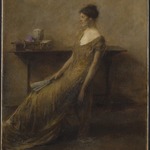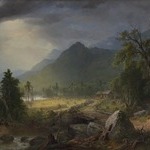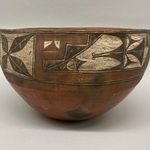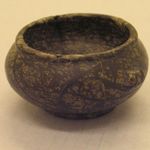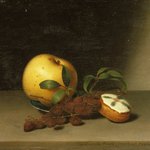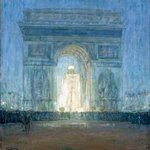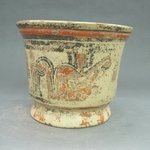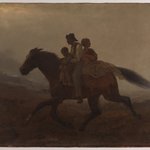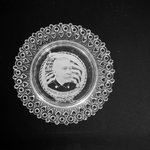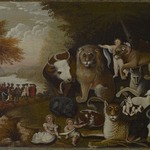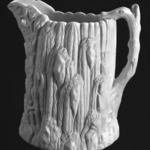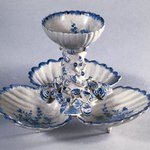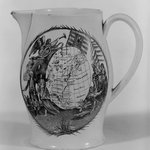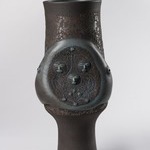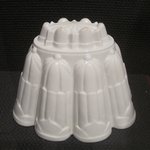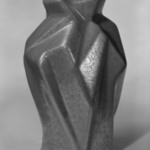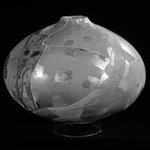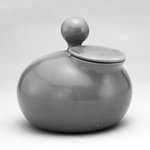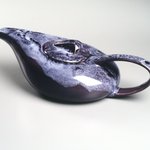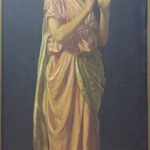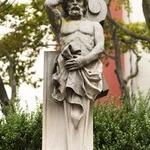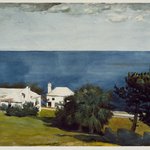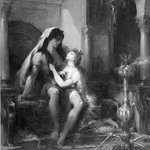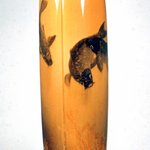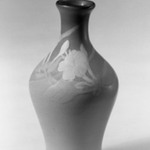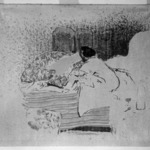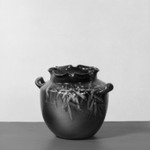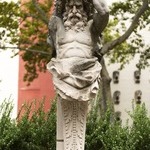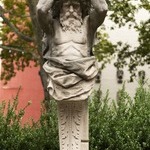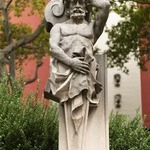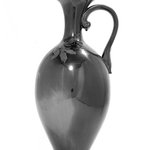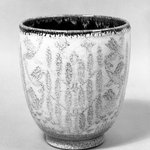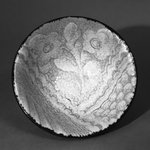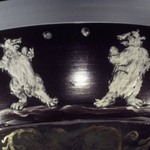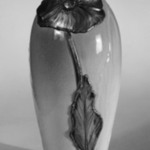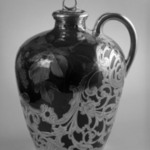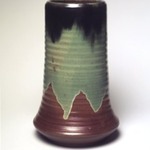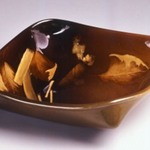Vase, Chief Shavehead
Decorative Arts and Design
On View: American Art Galleries, 5th Floor, Radical Care
During the late nineteenth century, as Indigenous peoples were displaced onto reservations and their land and lifeways denied to them, white settler manufacturers capitalized on their likeness and cultural heritage. In design magazines, living rooms were shown filled with Native baskets, rugs, and ceramics, as well as images of Native people rendered in sculpture, photography, and decorative objects made by white artists.
Grace Young, an artist employed by the woman-owned Rookwood Pottery of Cincinnati, Ohio, was noted for her portraits of Indigenous people. These were often copied from likenesses taken by white photographers, as seen on this vase with the image of an Arapaho individual identified as “Shavehead.” On this amber-hued vase, Young portrayed him as a dignified leader, a design that was particularly attractive to white consumers.
MEDIUM
Glazed earthenware
DATES
ca. 1899
DIMENSIONS
15 1/2 × 6 × 6 in. (39.4 × 15.2 × 15.2 cm)
mount: 15 1/2 × 6 × 6 in. (39.4 × 15.2 × 15.2 cm)
(show scale)
MARKINGS
Impressed on bottom: "[stamp consisting of reversed 'RP' monogram surrounded by 13 flames] / 856 / B"
Incised by hand on bottom, in script: "- Shavehead - / - Arapahoe - "
SIGNATURE
no signature
INSCRIPTIONS
no inscriptions
ACCESSION NUMBER
84.176.4
CREDIT LINE
Gift of Mr. and Mrs. Jay Lewis
PROVENANCE
Prior to 1984, provenance not yet documented; by 1984, acquired by Jay Lewis and Emma Lewis (Mrs. Jay Lewis) of Flushing, NY; December 20, 1984, gift of Jay and Emma Lewis to the Brooklyn Museum.
Provenance FAQ
CATALOGUE DESCRIPTION
Vase, slender oviform vase with flared neck decorated with portrait of an Indian brave in profile wearing full-feathered headdress and striped blanket in shades of ochre, green, brown and deep orange, on a dark brown ground.
CONDITION: Drilled. Some scratches to glaze, especially lower part of Indian.
CAPTION
Grace Young (American, 1869–1947). Vase, Chief Shavehead, ca. 1899. Glazed earthenware, 15 1/2 × 6 × 6 in. (39.4 × 15.2 × 15.2 cm). Brooklyn Museum, Gift of Mr. and Mrs. Jay Lewis, 84.176.4. Creative Commons-BY (Photo: Brooklyn Museum, 84.176.4_SL1.jpg)
IMAGE
overall, 84.176.4_SL1.jpg. Brooklyn Museum photograph
"CUR" at the beginning of an image file name means that the image was created by a curatorial staff member. These study images may be digital point-and-shoot photographs, when we don\'t yet have high-quality studio photography, or they may be scans of older negatives, slides, or photographic prints, providing historical documentation of the object.
RIGHTS STATEMENT
Creative Commons-BY
You may download and use Brooklyn Museum images of this three-dimensional work in accordance with a
Creative Commons license. Fair use, as understood under the United States Copyright Act, may also apply.
Please include caption information from this page and credit the Brooklyn Museum. If you need a high resolution file, please fill out our online
application form (charges apply).
For further information about copyright, we recommend resources at the
United States Library of Congress,
Cornell University,
Copyright and Cultural Institutions: Guidelines for U.S. Libraries, Archives, and Museums, and
Copyright Watch.
For more information about the Museum's rights project, including how rights types are assigned, please see our
blog posts on copyright.
If you have any information regarding this work and rights to it, please contact
copyright@brooklynmuseum.org.
RECORD COMPLETENESS
Not every record you will find here is complete. More information is available for some works than for others, and some entries have been updated more recently. Records are frequently reviewed and revised, and
we welcome any additional information you might have.
This is epic.
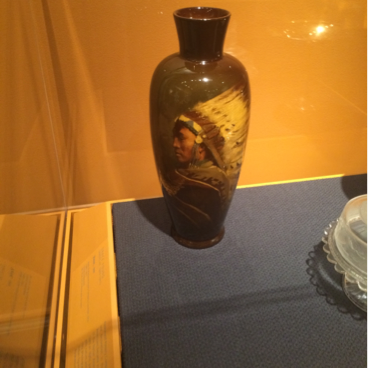
I agree, that's a really striking piece. Several works in that room show American artists' (and audiences') interest in Native American art and identity.
Rookwood Pottery was a major American ceramics company of the late 1800s and early 1900s. They produced a series of works decorated with images of Native Americans around the turn of the century. Rookwood's artists used photographs of Native American individuals as source material and they copied the photos to create these decorations.
